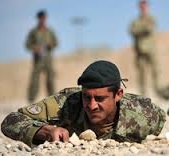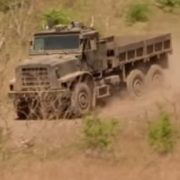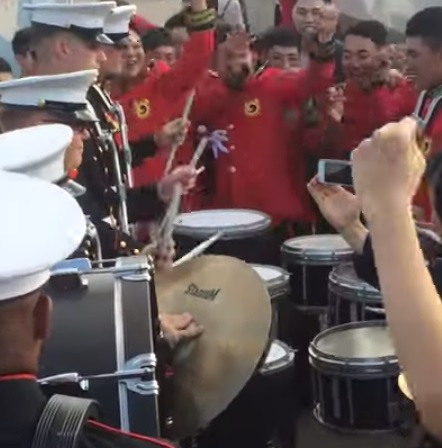While the US presence in Afghanistan may be minimal, counter-IED efforts persist. Indeed, it appears to be one of the few areas in which Afghans are actively trying to emulate the Americans they are replacing. The following article originally appeared in Strategy page.
In Afghanistan the government officially recognized their most effective EOD (Explosive Ordnance Disposal) technician; Staff Sergeant Abdul Ghafoor Afghan Yar. One of the earliest Afghans trained to do EOD work, Yar has managed to disable over 6,000 roadside bombs, mines and other IEDs (improvised explosive devices), most of them in the last three years and mainly in the most violent place in Afghanistan; Helmand province. For his efforts Yar was promoted to Senior Sergeant, the highest NCO rank. He now spends most of his time training new EOD technicians.
By mid-2013 Afghan security forces had largely taken over from Americans the EOD work. At that time about half the 300 Afghan police and soldiers killed each month were victims of the roadside bombs and mines the EOD teams don’t know about or don’t get to in time. NATO troops suffered a slightly lower rate of loss to these bombs, which indicates that the Afghans were able to be competitive in this area. The Afghan EOD troops have plenty of work. Up until 2014 most Afghan EOD teams were still accompanied by a few of their American counterparts, to advise, warn, and tutor but now most of the Afghan EODs are on their own.
By American standards the Afghans are quick learners but brash and sometimes undisciplined. But each time these bad habits get an Afghan EOD tech killed or hurt, the word gets around and attitudes are adjusted a bit. Many Afghans believed the American EOD men were some kind of magicians but the work is all about precision and discipline. To some Afghans that is still magic, but it’s a form of magic an Afghan can acquire.
In 2013 the Afghans about 400 EOD technicians and that number has more than doubled since then. In 2013 the Afghan army and police were taking over security responsibility for all of Afghanistan, and currently all but the most violent areas in the south and east were protected by Afghans. Thus Afghan EOD teams were taking care of most of the bombs. Afghanistan needed about a thousand of these specialists to replace the departed American and NATO EOD specialists. In 2013, two or three bombs went off each day and killed three or four Afghans on average. Since then the number of IEDs used has increased.
By 2014 NATO had set up an EOD school staffed with 190 EOD experts and provided 19 different courses. Much of this training prepares soldiers and police to better spot bombs and call in EOD to deal with it. The EOD training is long (eight months) and arduous because the work is dangerous. The casualty rate is higher than being in the infantry but the pay is better and you get a lot of respect, which is a big deal in Afghanistan. The danger is not a totally negative thing because EOD always attracted the adrenaline junkies, who were skilled and disciplined enough to get through the training.
The Afghans have adopted the American attitude that only the best recruits will do and that the skills must be mastered before the new EOD techs are turned loose on the real thing. Trainees take quickly to this arrangement and all the details (of different kinds of bombs) and equipment (robots, sensor, and the full body protective suit) the job involves. Many of the new Afghan EODs already have experience working on the demining teams that have been clearing Afghanistan of all the mines and old munitions left behind by the Russians in the 1980s.
One downside of the American approach to EOD is the use of a lot of expensive equipment (special bomb suits, robots, jammers, and sensors). While the U.S. will leave a lot of this stuff behind, the Afghans are worried about keeping it maintained.












